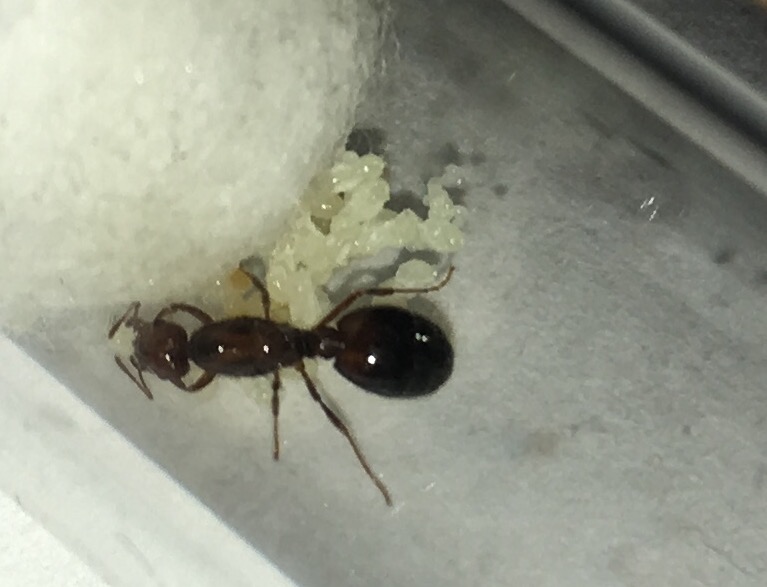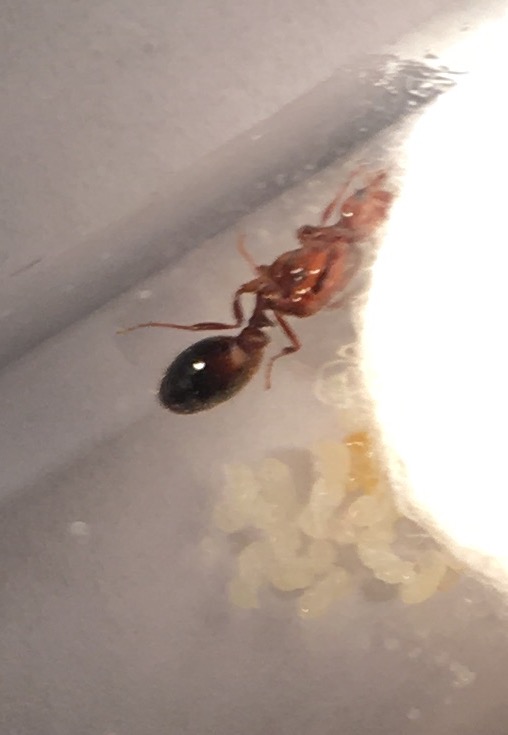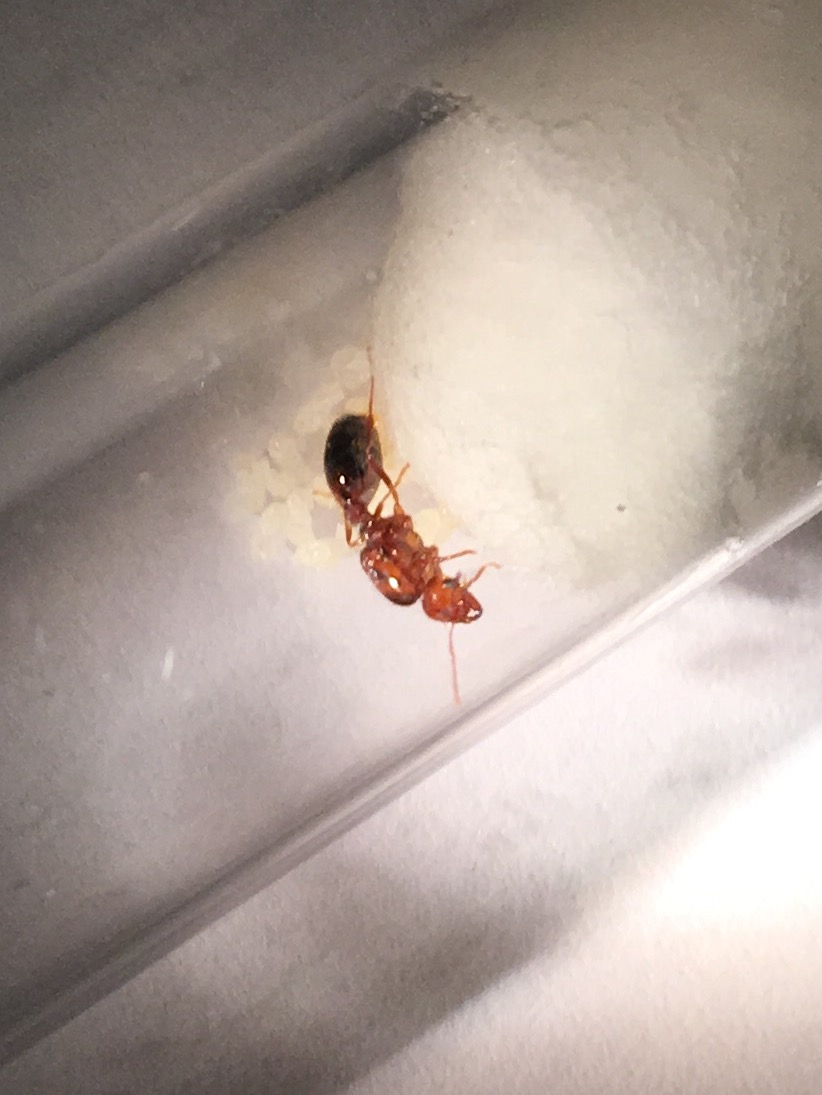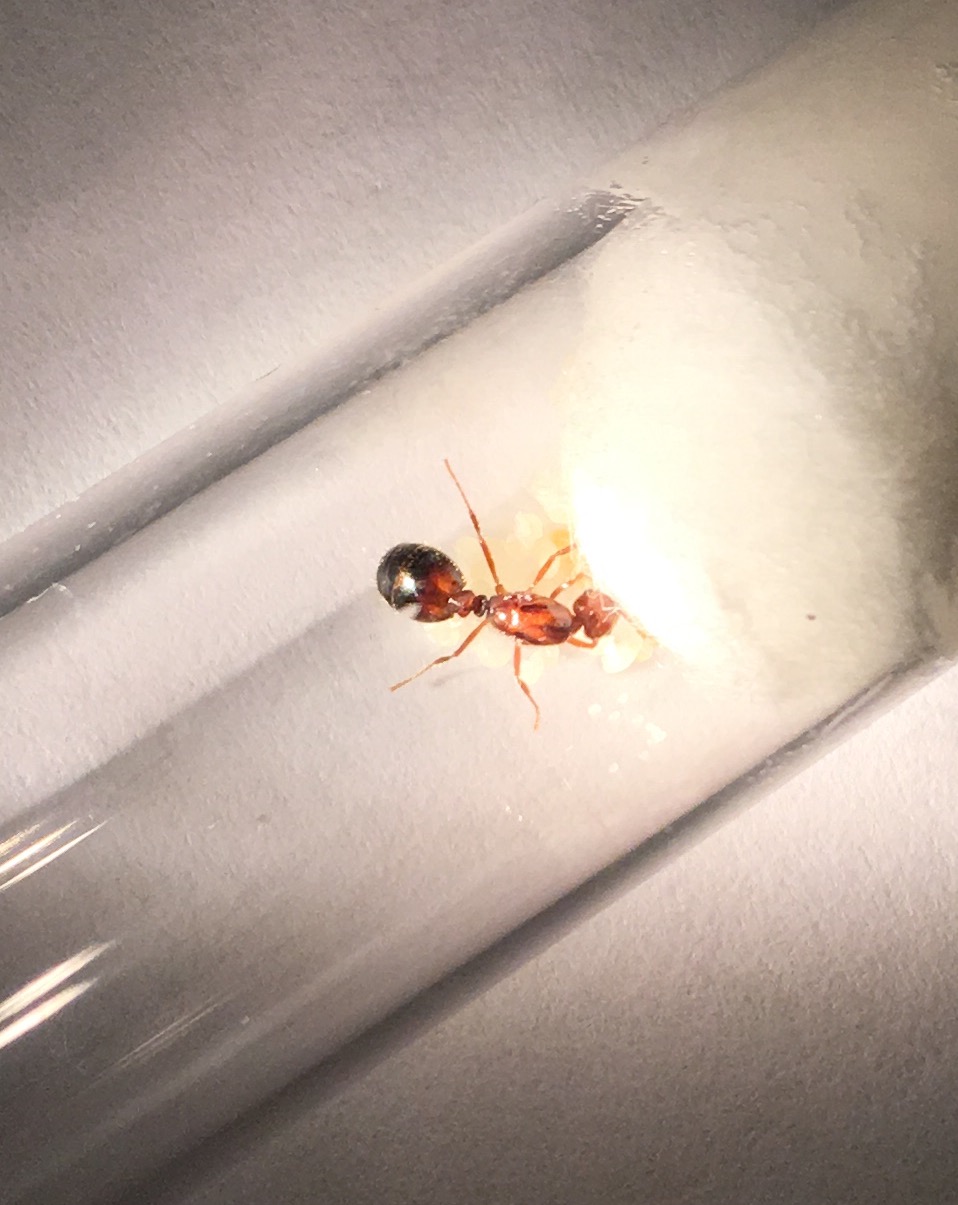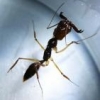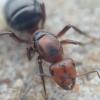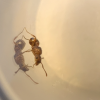2. Date of collection: April 28, 2016, late afternoon, around 5 pm.
3. Habitat of collection: Suburban sidewalk. There are a lot of live oak, red oak, Chinese elm, grass lawns, and other residential developer landscaping around.
4. Length: 9-10 mm.
5. Coloration, hue, pattern and texture: Again, wish I had a better camera here. To the naked eye she's dark brown with an almost black abdomen (see first photo); but, lit up with a flashlight she seems very reddish brown (see other photos). She's shiny and has a few fine hairs on her abdomen and legs.
6. Distinguishing characteristics: Wish I had better resolution but the photos will have to suffice. No spine on the thorax, a pointy petiole, and blunt postpetiole.
7. Anything else distinctive: Nothing distinctive per se. When I remove the darkness shade from the tube she becomes quite frenetic (pardon the anthropomorphisation) stumbling around, moving brood and dropping them everywhere, and making photos difficult. Some of the brood have pupated but no cocoon - naked pupae? I mention this as it seemed to be a clinching factor in another post, though I've read elsewhere that test tube babies are sometimes naked as cocooning requires a substrate to start?
8. Nest description: Unknown - newly mated, wandering queen.
Edited by Bryansant, May 22 2016 - 7:28 PM.






